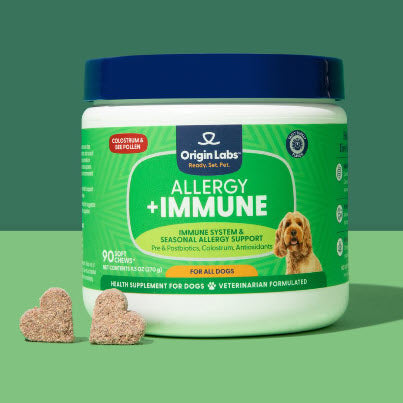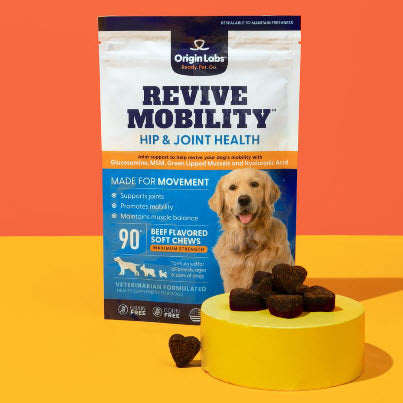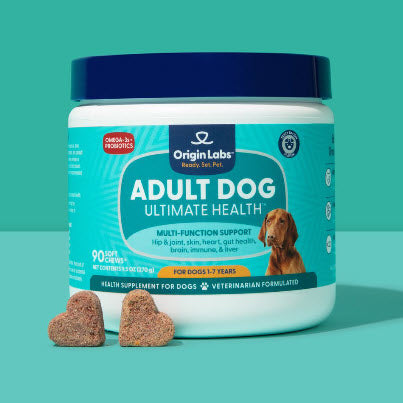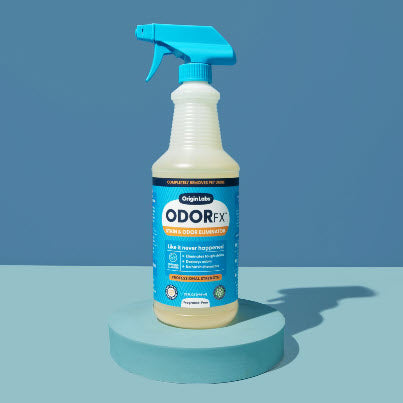Introduction
Feeding human food to dogs has become increasingly popular, with many pet owners eager to share their favorite dishes with their furry friends. This trend brings us to an interesting question: Can dogs eat lobster? The dos and don'ts of feeding lobster to dogs are essential for any pet owner to understand before offering this seafood delicacy to their canine companion.
The Popularity of Feeding Dogs Human Food
Pet owners often find joy in sharing meals with their dogs, seeing it as a way to bond and treat their pets. Human foods like chicken, rice, and certain vegetables have long been staples in many dog diets. However, not all human foods are safe or beneficial for dogs. Thus, understanding the specific health considerations for dogs and lobster is crucial before making it a part of their diet.
Understanding the Nutritional Value of Lobster for Dogs
Lobster is often seen as a luxury food item, but it actually contains many nutrients that can be good for your dog. While there are some risks involved, knowing about these nutrients can help you make a better choice for your furry friend.
Key Nutrients in Lobster
Lobster is packed with several essential nutrients that contribute to a dog's overall well-being:
- Protein: As a high-protein food, lobster can support muscle development and repair. Protein is vital for maintaining strong and healthy muscles, especially in active or aging dogs.
- Omega-3 Fatty Acids: These fatty acids are known for their anti-inflammatory properties. They play a significant role in promoting a healthy coat and skin and supporting joint health, which is particularly beneficial for older dogs prone to arthritis.
- Vitamins and Minerals: Lobster contains various vitamins such as Vitamin B12, which aids in maintaining nerve and blood cell health. Minerals like zinc and phosphorus are also present, contributing to bone health and metabolic functions.
Protein in Lobster for Dogs
Dogs need protein as an important part of their diet because it:
- Supports growth in puppies
- Aids in healing after injuries or surgeries
- Provides energy for active dogs
Omega-3 Fatty Acids in Lobster for Dogs
The omega-3 fatty acids found in lobster provide multiple health benefits:
- Promote skin and coat health by reducing irritations and maintaining shine
- Support joint health by reducing inflammation and relieving pain in dogs with conditions like arthritis
Vitamins and Minerals
Lobster's nutritional profile includes:
- Vitamin B12: Essential for brain function and the production of red blood cells. A deficiency can lead to anemia and neurological issues.
- Zinc: Supports immune function and wound healing.
- Phosphorus: Works with calcium to build strong bones and teeth.
Incorporating Lobster into Your Dog's Diet
While lobster can offer these nutritional benefits, it should be introduced carefully. Always cook the lobster thoroughly to avoid any potential bacterial contamination. Remove all shells to prevent choking hazards or digestive blockages.
Serving Suggestions:
- Small Portions: Start with small amounts mixed into your dog's regular food.
- Monitor Reactions: Keep an eye out for any adverse reactions or allergies.
- Avoid Additives: Do not add butter, garlic, or other seasonings that could be harmful to your dog.
Understanding the nutrients found in lobster provides insight into why this seafood might be considered for your dog’s diet. Balancing these benefits with potential risks ensures a safer dietary addition for your canine companion.
Potential Risks of Feeding Lobster to Dogs
Feeding lobster to dogs might seem like a luxurious treat, but it's essential to be aware of potential allergic reactions and sensitivities. Allergies in dogs can manifest in various ways, and knowing the signs can help you act quickly to protect your pet's health.
Identifying Allergic Reactions and Sensitivities in Dogs
Common Symptoms of Allergic Reactions in Dogs
Allergic reactions in dogs can range from mild to severe. Here are some common symptoms:
- Itching and Scratching: Persistent scratching, especially around the face, ears, and paws.
- Red or Inflamed Skin: Visible redness or inflammation on the skin, sometimes accompanied by hives.
- Gastrointestinal Issues: Vomiting or diarrhea shortly after eating.
- Swelling: Swelling of the face, lips, eyelids, or ear flaps.
- Respiratory Problems: Difficulty breathing, sneezing, coughing, or wheezing.
If you notice any of these symptoms after your dog consumes lobster, it's crucial to consult a veterinarian immediately. They can provide appropriate treatment and advice on how to manage the allergy.
Determining If Your Dog Is Allergic or Sensitive to Lobster
Before introducing lobster into your dog's diet, it's wise to perform a simple sensitivity test. Start by offering a small amount of cooked lobster meat without any seasoning or added ingredients. Monitor your dog closely for any adverse reactions over 24 hours.
Keep a lookout for:
- Changes in behavior such as lethargy or hyperactivity.
- Gastrointestinal disturbances like vomiting or diarrhea.
- Skin reactions including itching or redness.
If your dog shows no signs of discomfort, it may be safe to incorporate lobster occasionally. However, always proceed with caution and speak with your vet before making any significant dietary changes.
The Dangers of High Cholesterol Levels and Sodium Ion Poisoning in Dogs
Lobster is naturally high in sodium and cholesterol. While these nutrients are necessary in controlled amounts, excessive intake can pose health risks for dogs.
Understanding the risks associated with excessive sodium and cholesterol in a dog's diet is crucial, especially when considering lobster as a treat. While lobster contains beneficial nutrients, it also presents certain hazards that pet owners should be aware of.
Sodium Ion Poisoning in Dogs
Sodium ion poisoning occurs when dogs ingest too much salt. Lobster, particularly when prepared for human consumption, often contains high levels of sodium due to added seasonings and cooking methods.
Symptoms of Sodium Ion Poisoning:
- Vomiting
- Diarrhea
- Lethargy
- Tremors
- Seizures
- Coma
If you notice any of these symptoms after your dog consumes lobster, it’s critical to seek veterinary help immediately.
Managing Sodium Intake:
- Monitor Portions: Ensure that any lobster given to your dog is plain and unseasoned.
- Limit Frequency: Avoid making lobster a regular part of your dog’s diet.
- Hydration: Encourage your dog to drink plenty of water to help flush out excess sodium.
High Cholesterol Levels in Dogs
Lobster, like other seafood, contains cholesterol. While dogs can tolerate some cholesterol, excessive amounts can lead to health issues such as obesity and pancreatitis.
Risks of High Cholesterol:
- Obesity: Excess cholesterol can contribute to weight gain and obesity-related conditions.
- Pancreatitis: High-fat diets are a known risk factor for pancreatitis in dogs, a condition where the pancreas becomes inflamed.
Preventing High Cholesterol:
- Balanced Diet: Ensure your dog's overall diet is balanced and low in saturated fats.
- Regular Exercise: Maintain an active lifestyle for your dog to manage weight effectively.
Highlighting the potential adverse effects of dogs consuming lobster helps pet owners make informed decisions. By understanding the dangers of sodium ion poisoning and high cholesterol levels from eating lobster, you can better safeguard your furry friend's health.
Best Practices for Feeding Lobster to Your Dog
Moderation is Key: Guidelines for Safely Incorporating Lobster into Your Dog's Meals
Feeding lobster to your dog can be a delightful treat but requires careful consideration. Here’s how you can safely introduce this seafood delicacy into your dog's diet:
1. Consulting a Vet Before Feeding Lobster to Dogs
Always seek advice from your veterinarian before introducing any new food to your pet. Vets can provide personalized guidance based on your dog's health history, dietary needs, and potential allergies.
2. Introducing New Foods Gradually to Dogs
Sudden changes in diet can upset a dog’s digestive system. Start by offering small pieces of lobster and monitor for any adverse reactions. Gradually increase the portion size if no negative symptoms emerge, such as vomiting, diarrhea, or itching.
3. Moderation in Feeding Lobster to Dogs
Limit lobster to an occasional treat rather than a regular part of their diet. Excessive intake may lead to nutrient imbalances or health issues due to its sodium and cholesterol content. A good rule of thumb is to ensure that treats make up no more than 10% of your dog's daily caloric intake.
4. Preparing Lobster Properly
Cook the lobster thoroughly without adding salt, butter, or seasonings that could harm your dog. Remove the shell entirely to prevent choking hazards or damage to their teeth and digestive tract.
5. Monitoring Your Dog’s Reaction
Keep an eye out for any signs of allergic reactions or digestive discomfort after the first few servings. Symptoms like excessive scratching, swelling, hives, or gastrointestinal upset should prompt an immediate consultation with your vet.
6. Balancing Nutritional Value
Complement the occasional lobster treat with a well-balanced diet rich in essential nutrients from other sources like fruits, vegetables, and protein-rich foods suitable for dogs.
Example Schedule for Introducing Lobster
- Day 1: Offer a small bite-sized piece of lobster.
- Day 2-3: Observe for any adverse reactions.
- Day 4: If no issues arise, provide a slightly larger portion (e.g., two bite-sized pieces).
- Day 5-7: Continue monitoring closely.
- Subsequent Weeks: If tolerated well, include lobster as an occasional treat once every few weeks.
By following these best practices, you can ensure that feeding lobster to your dog remains a safe and enjoyable experience for both you and your furry friend.
Alternatives to Lobster for a Well-Balanced Doggy Diet
Introducing a variety of healthy foods into your dog's diet is essential for their overall well-being. While lobster can be an occasional treat, there are numerous other nutritious options that can support your dog's health. These include fruits, vegetables, beans, and nuts.
Fruits for Dogs
Fruits can be a delightful and healthy addition to your dog's diet. They are packed with vitamins, minerals, and antioxidants. Here are some fruits that are safe and beneficial for dogs:
- Blueberries: Rich in antioxidants which help combat oxidative stress.
- Apples: Provide fiber and vitamin C; remember to remove seeds and core.
- Bananas: High in potassium, but should be given in moderation due to their sugar content.
- Watermelon: Hydrating and full of vitamins A, B6, and C; ensure seeds are removed.
Vegetables for Dogs
Vegetables offer essential nutrients that support various bodily functions. Including a mix of the following veggies can enhance your dog's diet:
- Carrots: Great source of beta-carotene (vitamin A), good for vision and immune health.
- Green Beans: Low in calories, high in fiber; they help maintain healthy digestion.
- Sweet Potatoes: Packed with vitamins A and C, plus they provide dietary fiber.
- Spinach: Contains iron and magnesium; best served cooked to reduce oxalate levels.
Beans for Dogs
Beans are an excellent source of protein and fiber. They should be cooked thoroughly to ensure they are safe for consumption:
- Black Beans: Provide protein, fiber, and essential vitamins.
- Chickpeas (Garbanzo Beans): Rich in protein and fiber; make sure they are cooked well.
- Lentils: Nutrient-dense legumes that offer protein, iron, and folate.
Nuts for Dogs
Nuts can be nutritious but should be given sparingly due to their high-fat content. Not all nuts are safe for dogs; here are some safe options:
- Peanuts (unsalted): Good source of protein and healthy fats; avoid peanut butter with xylitol.
- Cashews: Contain calcium, magnesium, and antioxidants; feed in moderation.
- Almonds (unsalted): Provide vitamin E and healthy fats; serve occasionally.
When incorporating these alternatives into your dog’s diet:
- Always introduce new foods gradually to monitor for any adverse reactions.
- Keep portions appropriate relative to your dog’s size and dietary needs.
- Ensure the selected foods do not contain additives or seasonings harmful to dogs.
Exploring these healthy foods provides a balanced diet ensuring your furry friend stays happy and healthy without relying solely on seafood treats like lobster.
In Conclusion
Sharing lobster with your dog can be a delightful treat, provided you do it carefully and consciously. The main point is to not overdo it. While lobster has beneficial nutrients like protein and omega-3 fatty acids that are good for your dog's health, it's important to know about the possible dangers.
Final Thoughts on Safely Sharing Lobster with Your Beloved Pooch:
- Moderation: Small amounts of plain, cooked lobster can be a healthy supplement to your dog's diet.
- Preparation: Always remove the shell and avoid adding any seasoning or butter.
- Monitoring: Watch for any signs of allergic reactions or sensitivities, and consult your vet if you have concerns.
- Alternatives: Consider other nutritious options like fruits, vegetables, beans, and nuts to ensure a well-balanced diet.
Understanding the balance between benefits and risks helps in making informed decisions about feeding lobster to your dog. Safe practices ensure that sharing this seafood delicacy becomes a positive experience for both you and your furry friend.
FAQs (Frequently Asked Questions)
Can dogs eat lobster?
Yes, dogs can eat lobster in moderation. It's important to understand the potential benefits and risks before sharing this seafood delicacy with your canine companion.
What are the key nutrients found in lobster for dogs?
Lobster contains essential nutrients such as protein and omega-3 fatty acids, which play a role in supporting overall canine health.
What are the common symptoms of allergic reactions in dogs to lobster?
Common symptoms of allergic reactions in dogs to lobster may include itching, swelling, hives, vomiting, diarrhea, or difficulty breathing. If these occur, it's important to consult a veterinarian.
What are the potential dangers of sodium ion poisoning and high cholesterol levels in dogs from consuming lobster?
Excessive consumption of lobster by dogs can lead to sodium ion poisoning and high cholesterol levels, which can have adverse effects on their health. It's crucial to be mindful of these risks when incorporating lobster into a dog's diet.
What are the best practices for feeding lobster to dogs?
When feeding lobster to dogs, it's important to do so in moderation, consult a vet beforehand, and introduce new foods gradually to avoid any adverse reactions.
What are some alternatives to lobster for a well-balanced doggy diet?
Other nutritious options for a well-balanced doggy diet include fruits, vegetables, beans, and nuts. These can also support your dog's health and well-being.








